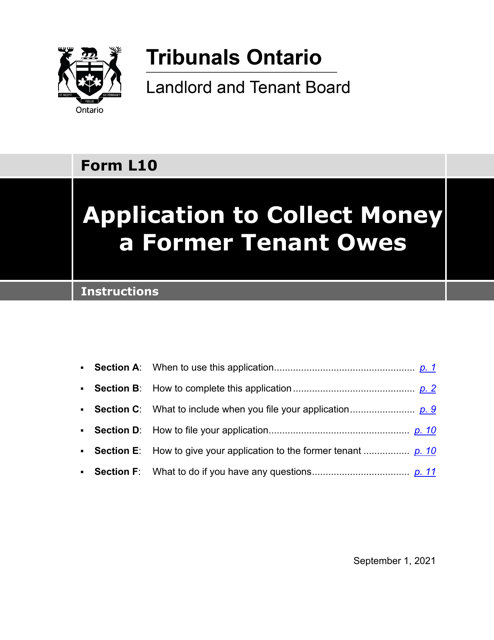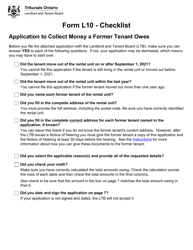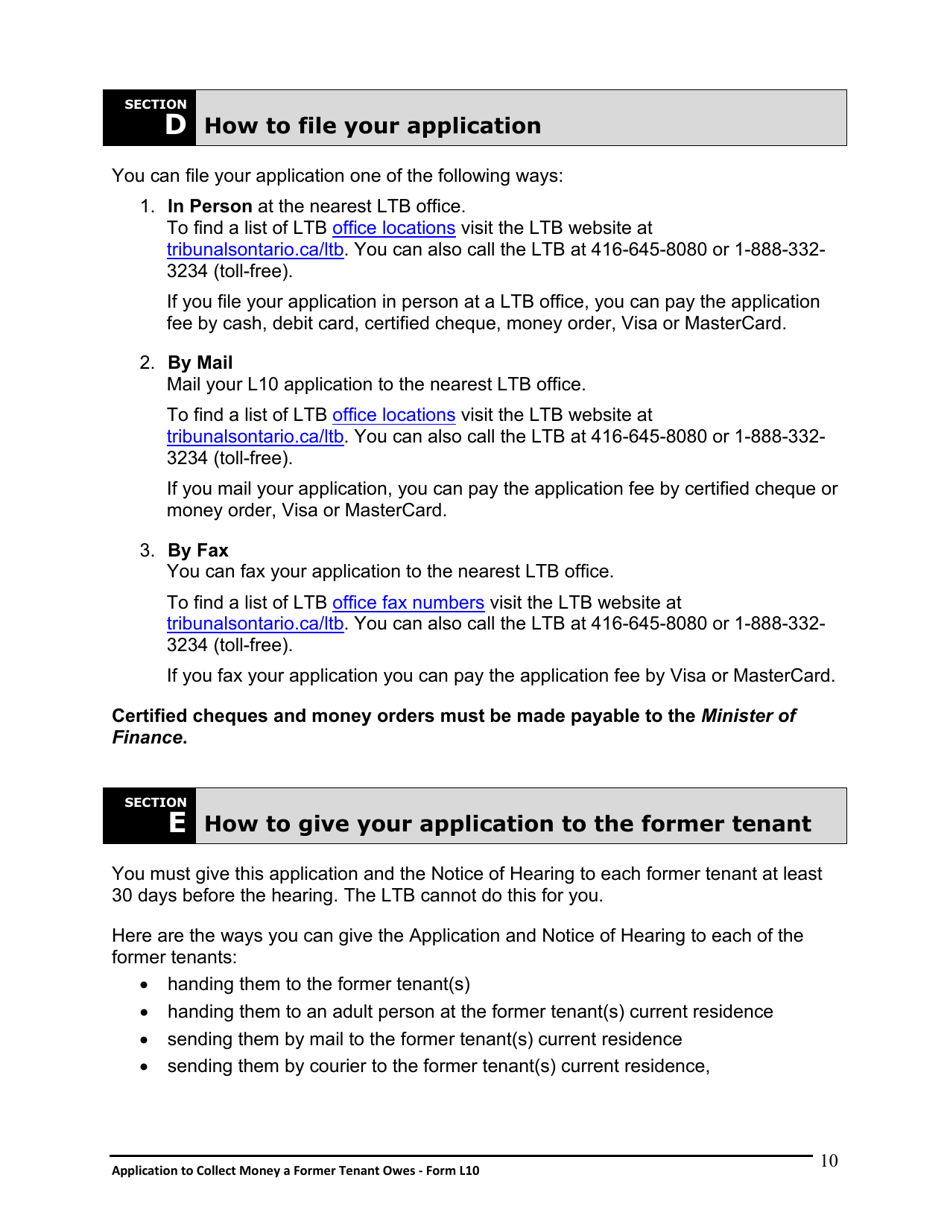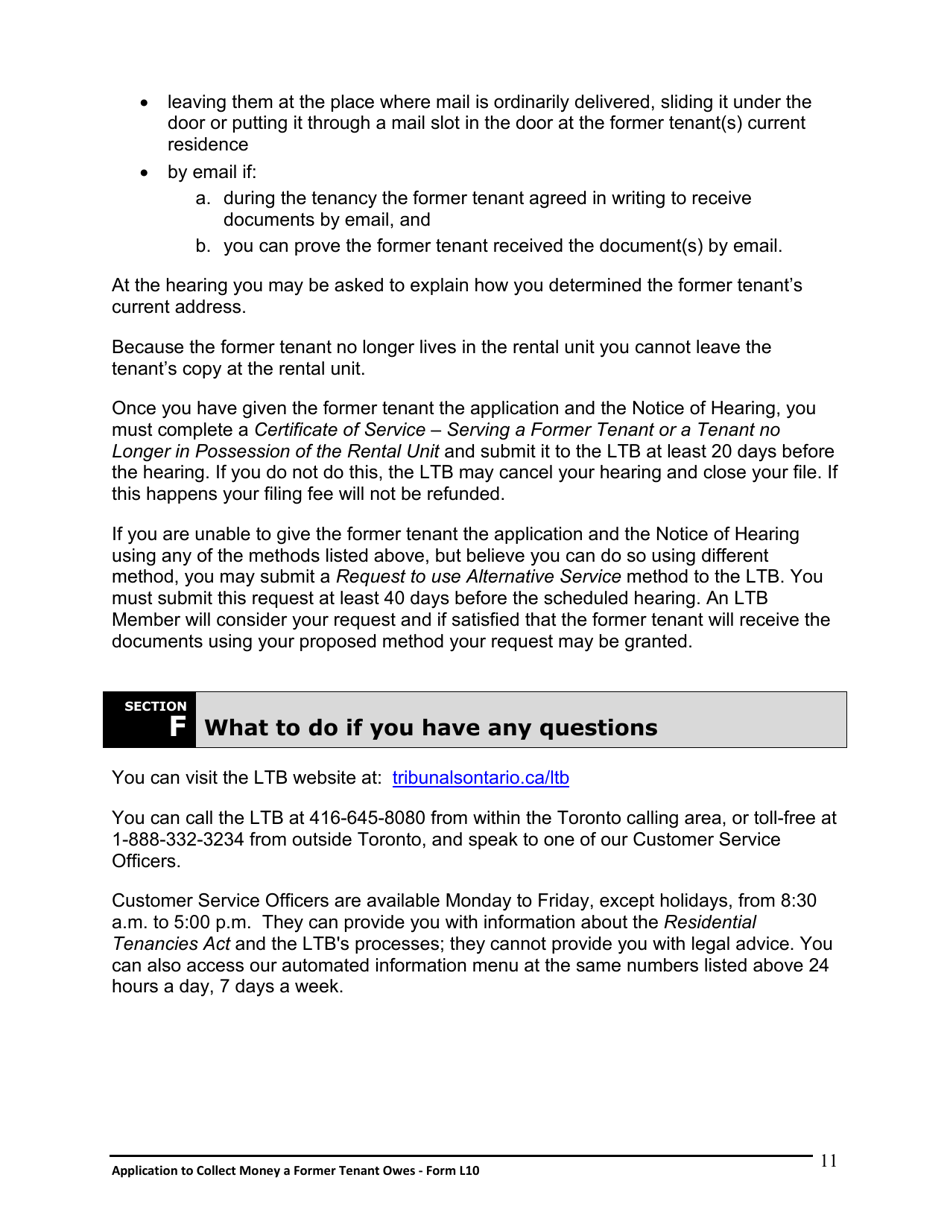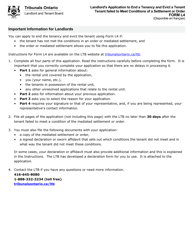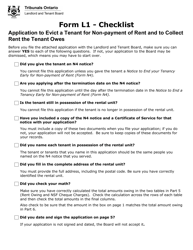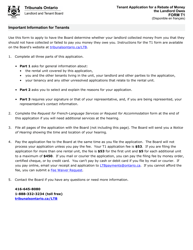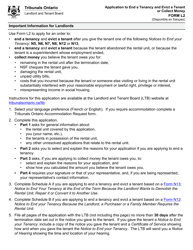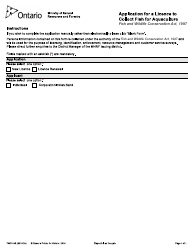This version of the form is not currently in use and is provided for reference only. Download this version of
Instructions for Form L10
for the current year.
Instructions for Form L10 Application to Collect Money a Former Tenant Owes - Ontario, Canada
The Instructions for Form L10 Application to Collect Money a Former Tenant Owes - Ontario, Canada provides guidance on how to complete and submit the form for collecting money that a former tenant owes in Ontario, Canada.
In Ontario, Canada, the instructions for Form L10 Application to Collect Money a Former Tenant Owes would typically be filed by the landlord or the property owner.
FAQ
Q: What is Form L10?
A: Form L10 is an application form used in Ontario, Canada to collect money owed by a former tenant.
Q: What information is required on Form L10?
A: Form L10 requires information about the former tenant, the amount of money owed, and details about the lease agreement.
Q: What should I do once I have completed Form L10?
A: Once you have completed Form L10, you must file it with the Landlord and Tenant Board and pay the required fee.
Q: Can I include other expenses on Form L10?
A: Yes, you can include other expenses such as unpaid rent, damages, or unpaid utilities on Form L10.
Q: What happens after I file Form L10?
A: After you file Form L10, the Landlord and Tenant Board will review your application and schedule a hearing if necessary.
Q: What should I bring to the hearing?
A: You should bring any supporting documents, such as lease agreements, invoices, or receipts, to the hearing.
Q: What can I do if the former tenant still doesn't pay after the hearing?
A: If the former tenant still doesn't pay after the hearing, you may need to take further legal action, such as hiring a collection agency or pursuing a small claims court case.
